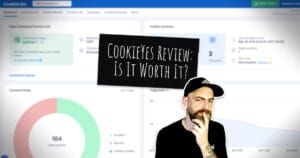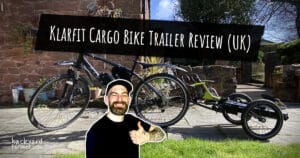Table of contents
- Why Use LED Grow Lights for Indoor Gardening?
- How Do LED Grow Lights Work?
- What Types of Plants Benefit from LED Grow Lights?
- Choosing the Right LED Grow Lights for Your Space
- How to Set Up Your LED Grow Light System
- Common Mistakes to Avoid When Using LED Grow Lights
- Top Recommended LED Grow Lights for Indoor Gardens
- Energy Efficiency and Cost Benefits of LED Grow Lights
- Conclusion: Why LED Grow Lights Are the Future of Indoor Gardening
Creating the perfect indoor garden is both an art and a science, and one of the most important tools in your gardener’s toolkit is the right lighting. Whether you’re growing herbs in your kitchen, cultivating leafy greens, or nurturing houseplants, LED grow lights have revolutionized indoor gardening, allowing plants to thrive in any season.
Why Choose LED Grow Lights?
Unlike traditional grow lights, LED grow lights for indoor gardens are designed to mimic the natural sunlight that plants need for photosynthesis. They offer:
- A balanced spectrum of red and blue light, supporting every stage of plant growth.
- Energy efficiency, using less electricity than older lighting technologies (e.g., HID or fluorescent).
- Low heat output, reducing the risk of overheating plants and keeping your space comfortable.
- A long lifespan, lasting significantly longer than traditional bulbs.
How LED Grow Lights Benefit Your Indoor Garden
Indoor gardening has its challenges, particularly when it comes to light availability. Without the proper amount of light, your plants may:
- Struggle to grow,
- Become weak, or
- Fail to produce flowers or fruit.
LED grow lights solve this problem by providing the full light spectrum your plants need, ensuring they thrive regardless of the season or weather outside. Here’s why LED lights are ideal:
- Energy-efficient: Lower electricity bills.
- Versatile: Suitable for small herb gardens or larger vegetable setups.
- Customizable: Tailor the light intensity and spectrum to your plants’ needs.
What to Expect in This Guide
In this article, we’ll cover:
- The key benefits of using LED grow lights for indoor gardening,
- How to choose the right LED grow lights based on your space and plants,
- Recommendations for the best LED grow lights available in 2024.
Whether you’re a beginner or an experienced indoor gardener, LED grow lights offer the ideal solution for growing healthy, vibrant plants indoors.
Ready to learn more? Let’s dive into the world of indoor gardening lighting and discover how LED grow lights can transform your garden.
Why Use LED Grow Lights for Indoor Gardening?
When it comes to growing plants indoors, natural light is often insufficient, especially in low-light environments or during the winter months. This is where LED grow lights come to the rescue, offering an efficient and reliable solution to ensure your indoor garden thrives.
Key Benefits of LED Grow Lights
1. Energy Efficiency
- Keywords: Energy-efficient grow lights, low heat LED grow lights
- LED grow lights use significantly less electricity than traditional lighting options like HID or fluorescent lights.
- With up to 60% less energy consumption, you’ll save money on electricity bills while supporting a more sustainable indoor gardening practice.
2. Full-Spectrum Lighting
- Keywords: Full-spectrum LED lights, artificial lighting for plants
- LED grow lights provide a full spectrum of light, closely mimicking natural sunlight. This is crucial for all stages of plant growth, from the vegetative phase to flowering and fruiting.
- The blue light encourages strong root and leaf growth, while red light helps plants flower and produce fruit.
3. Low Heat Output
- Keywords: Low heat grow lights, quiet LED grow lights
- Traditional lights can produce excessive heat, which may harm plants. LED grow lights emit far less heat, reducing the risk of overheating and making it easier to maintain the right temperature for your plants.
- Lower heat output also means less need for additional cooling systems, saving energy and cost.
4. Long Lifespan
- Keywords: LED grow lights lifespan, plant growth LED lamps
- LED lights last much longer than their counterparts, with an average lifespan of 50,000 hours or more.
- This durability means fewer replacements and lower overall costs for your indoor gardening setup.
Why LED Grow Lights Outperform Traditional Lighting
| Feature | LED Grow Lights | HID Lights | Fluorescent Lights |
| Energy Efficiency | Uses up to 60% less energy | High energy consumption | Moderate energy consumption |
| Heat Output | Low, reducing the need for cooling systems | High, requires extra ventilation | Moderate, but can still produce excess heat |
| Lifespan | 50,000+ hours | 10,000 – 20,000 hours | 20,000 – 30,000 hours |
| Full-Spectrum Lighting | Yes, mimics natural sunlight | Limited spectrum | Limited spectrum |
| Light Intensity Control | Adjustable and customizable | Requires multiple lights to adjust intensity | Less customizable |
| Cost Over Time | Low, due to long lifespan and low energy use | High, due to frequent replacements and high energy bills | Moderate |
Explanation of the Table:
- Energy Efficiency: LED grow lights use far less electricity, making them more cost-effective.
- Heat Output: LEDs produce minimal heat, reducing the need for extra cooling systems.
- Lifespan: LEDs last significantly longer, which lowers the cost of replacements.
- Full-Spectrum Lighting: LED grow lights provide full-spectrum light, which is crucial for all plant growth stages.
- Light Intensity Control: LED lights are adjustable, allowing gardeners to fine-tune the intensity for different plants.
- Cost Over Time: Despite higher upfront costs, LEDs save money in the long term due to their energy efficiency and durability.
By investing in LED grow lights, you’ll ensure that your plants receive the optimal conditions for growth, even in indoor environments where natural sunlight is limited.
How Do LED Grow Lights Work?
Understanding how LED grow lights function is essential to optimizing your indoor garden’s growth. These lights are designed to simulate the natural light spectrum that plants need for photosynthesis, promoting healthy growth at every stage—from seedlings to flowering and fruiting.
The Science Behind LED Grow Lights
1. Full-Spectrum Lighting
- Keywords: Full-spectrum LED lights, artificial light for plants
- LED grow lights emit a full spectrum of light, closely mimicking sunlight. This includes wavelengths from blue to red that are vital for plant growth.
- Blue light (400–500 nm): Promotes strong root development and leafy growth, making it essential during the vegetative stage.
- Red light (600–700 nm): Stimulates flowering and fruiting, helping plants bloom and produce fruit.
Plants need this balance of blue and red light for optimal health, which is why full-spectrum LED lights are preferred over other lighting options like fluorescent or HID lights.
2. Light Intensity and Photosynthesis
- Keywords: LED grow light intensity, photosynthesis light requirements
- LED lights can deliver the exact amount of light intensity required for various stages of plant growth, measured in PPFD (Photosynthetic Photon Flux Density). This ensures that plants receive the necessary energy to perform photosynthesis efficiently.
- Seedling stage: Requires lower light intensity to avoid burning delicate plants.
- Vegetative stage: Higher light intensity helps plants grow robustly.
- Flowering stage: Requires a balanced light intensity to support fruit and flower production without overwhelming the plant.
Red and Blue Light: Why They Matter
The specific wavelengths of blue and red light play crucial roles in plant development, and understanding their importance can help you make better decisions for your indoor garden.
| Light Color | Wavelength Range | Role in Plant Growth | Best For |
| Blue Light | 400–500 nm | Promotes chlorophyll production | Leafy greens, vegetative growth stages |
| Red Light | 600–700 nm | Stimulates flowering and fruiting | Fruiting plants, flowering plants |
- Blue light is essential for the early stages of plant growth, encouraging root and leaf development.
- Red light is vital for the later stages of growth, ensuring that plants produce flowers and fruit.
Adjustability and Customization
- Keywords: Adjustable LED grow lights, customizable grow lights
- LED grow lights allow you to adjust the spectrum and intensity to suit the specific needs of your plants. For example:
- During the vegetative stage, you can increase blue light exposure to promote stronger leaf development.
- During the flowering stage, you can shift the balance to favor red light, which encourages flowering and fruiting.
This customization ensures that your plants receive the right type and amount of light at each growth phase, something that traditional lights cannot easily provide.
Energy Efficiency and Precision
- Keywords: Energy-efficient grow lights, low heat LED lights
- One of the reasons LED grow lights are so efficient is their ability to deliver light directly to plants without wasting energy. Unlike traditional grow lights that produce a lot of heat, LEDs stay cool while delivering high-intensity light.
- This precision minimizes energy waste and reduces the need for cooling systems, making them both cost-effective and eco-friendly.
Why LED Lights Outperform Traditional Options
- Keywords: LED grow light advantages, best grow lights for plant growth
- In addition to their energy efficiency and customizable spectrum, LED grow lights provide several other advantages:
- Longer lifespan: LEDs can last up to 50,000 hours, compared to traditional lights that need more frequent replacements.
- Lower energy consumption: LEDs use less electricity, reducing costs and your carbon footprint.
- Cooler operation: With less heat output, you don’t have to worry about heat stress on your plants, especially in smaller spaces.
What Types of Plants Benefit from LED Grow Lights?
LED grow lights are highly versatile and can be used for a wide range of plants, including leafy greens, fruiting vegetables, herbs, and flowering houseplants. These lights provide the optimal light spectrum for every stage of plant growth, from seedlings to full-grown plants.
For a more in-depth look at how different plants benefit from LED grow lights and which spectrum works best for each type, check out our detailed guide on “Best LED Grow Lights for Different Types of Plants.” There, you’ll find tailored recommendations and tips for optimizing growth for specific plants like herbs, vegetables, and houseplants.
If you’re planning to grow more challenging crops like chillies indoors, you can learn more about the entire growing process in our guide on How to Grow Chillies from Seed.
Choosing the Right LED Grow Lights for Your Space
Selecting the right LED grow light for your indoor garden depends on various factors, such as your available space, the types of plants you’re growing, and the light intensity needed. It’s important to consider both the wattage and coverage area to ensure your plants get the light they need without wasting energy.
For a detailed breakdown of how to choose the best LED grow lights for different spaces, check out our comprehensive guide on “How to Choose the Right LED Grow Lights for Your Indoor Garden.”
How to Set Up Your LED Grow Light System
Setting up LED grow lights properly is crucial for ensuring your indoor garden’s success. This includes hanging your lights at the correct height, setting timers to automate light cycles, and adjusting light intensity as your plants grow.
If you’re looking for a step-by-step installation guide, along with tips on maintenance, visit our article on “How to Install and Maintain LED Grow Lights.”
Common Mistakes to Avoid When Using LED Grow Lights
While LED grow lights are generally easy to use, there are common mistakes that can affect your plants’ growth, such as placing lights too close, using the wrong spectrum, or providing too much light.
To avoid these errors and optimize your indoor garden, head over to our advanced guide on “Maximizing Plant Growth with LED Grow Lights.” It covers troubleshooting and advanced tips to help you get the most out of your lighting setup.
Top Recommended LED Grow Lights for Indoor Gardens
Choosing the right LED grow lights can be overwhelming with so many options on the market. Depending on your budget and garden size, there are different models suited for specific needs, from small herb gardens to large-scale vegetable setups.
For detailed recommendations and reviews of the best LED grow lights, be sure to read our guide on “Best LED Grow Lights for Different Types of Plants.” You’ll find top picks for various budgets and plant types.
Energy Efficiency and Cost Benefits of LED Grow Lights
One of the biggest advantages of using LED grow lights for your indoor garden is their outstanding energy efficiency and long-term cost savings. Compared to traditional lighting methods, such as HID (High-Intensity Discharge) or fluorescent lights, LEDs consume far less energy while delivering the same, if not better, results for plant growth.
1. Lower Energy Consumption
- Keywords: Energy-efficient grow lights, low energy consumption
- LED grow lights are known for their ability to use significantly less electricity while still providing the necessary light for healthy plant growth. They operate at up to 60% less energy consumption than HID lights and other traditional systems.
- This reduced energy consumption translates directly into lower electricity bills, making LEDs a more cost-effective choice in the long run, especially for large-scale indoor gardens or year-round growing.
2. Long Lifespan
- Keywords: Long-lasting LED grow lights, LED grow lights lifespan
- The lifespan of LED grow lights far exceeds that of traditional lighting. While HID or fluorescent lights typically last between 10,000 to 20,000 hours, LEDs can last up to 50,000 hours or more.
- This longevity means fewer bulb replacements over time, further reducing maintenance costs and effort. For gardeners looking to create a long-term setup, this is a significant advantage.
3. Low Heat Output
- Keywords: Low heat LED grow lights, energy-saving grow lights
- One of the key reasons LEDs are so energy-efficient is their ability to produce minimal heat compared to HID or fluorescent bulbs. Traditional grow lights can run extremely hot, requiring extra cooling systems or ventilation, which increases overall energy consumption.
- LED grow lights, on the other hand, remain cool to the touch and eliminate the need for additional cooling equipment, leading to further cost and energy savings.
4. Reduced Maintenance and Replacement Costs
- Keywords: Affordable LED grow lights, cost-saving grow lights
- Because LED grow lights last significantly longer and require less maintenance, you’ll save money not only on energy bills but also on replacement costs. With fewer bulb replacements and reduced need for cooling systems, the overall upkeep of an LED grow light system is minimal.
5. Sustainable and Environmentally Friendly
- Keywords: Eco-friendly grow lights, sustainable indoor gardening
- In addition to cost savings, LED grow lights are also more environmentally friendly. Their reduced energy consumption means they produce fewer carbon emissions, contributing to a smaller carbon footprint.
- Many LEDs are also designed to be fully recyclable, making them an eco-conscious choice for indoor gardeners who prioritize sustainability.
Energy Efficiency Comparison
| Lighting Type | Energy Consumption | Lifespan | Heat Output | Cost Over Time |
| LED Grow Lights | 60% less energy | 50,000+ hours | Low | Low (energy-saving, fewer replacements) |
| HID Grow Lights | High energy consumption | 10,000 – 20,000 hours | High | High (frequent replacements, extra cooling needed) |
| Fluorescent Grow Lights | Moderate energy consumption | 20,000 – 30,000 hours | Moderate | Moderate (still requires cooling, shorter lifespan) |
Why LEDs are the Most Cost-Effective Choice
- Lower electricity bills: With up to 60% less energy consumption, LED grow lights offer significant savings over time.
- Minimal maintenance: Thanks to their long lifespan, LEDs don’t need frequent replacements.
- Reduced cooling costs: With minimal heat output, there’s no need for additional cooling systems.
- Sustainability: LEDs contribute to a smaller environmental footprint through energy efficiency and recyclability.
By investing in energy-efficient LED grow lights, indoor gardeners can save money on energy bills and maintenance while fostering a more eco-friendly growing environment.
Conclusion: Why LED Grow Lights Are the Future of Indoor Gardening
LED grow lights have revolutionized indoor gardening by providing energy-efficient, customizable, and highly effective lighting solutions for a wide variety of plants. Whether you’re growing leafy greens, herbs, fruiting vegetables, or flowering houseplants, the ability to control the light spectrum and intensity ensures that your plants receive optimal light for every stage of growth.
Key Takeaways:
- Energy Efficiency: LED grow lights use up to 60% less energy, saving you money on electricity bills.
- Long Lifespan: With a lifespan of over 50,000 hours, you won’t need to frequently replace bulbs, further reducing maintenance costs.
- Customizable Light Spectrum: Adjustable light settings allow you to tailor the intensity and spectrum to the specific needs of your plants, promoting healthier growth and better yields.
- Low Heat Output: LED lights produce minimal heat, which protects your plants and eliminates the need for expensive cooling systems.
By switching to LED grow lights, you’ll not only enhance your indoor garden’s productivity but also reduce your carbon footprint and operating costs, making it a win-win for both your plants and your wallet.
What’s Next?
If you’re ready to take your indoor gardening to the next level, explore the following articles for more in-depth guidance:
- How to Choose the Right LED Grow Lights for Your Indoor Garden
- Best LED Grow Lights for Different Types of Plants
- How to Install and Maintain LED Grow Lights
- Maximizing Plant Growth with LED Grow Lights
These resources will help you make informed decisions on setting up, maintaining, and optimizing your LED grow lights for the best possible results.





